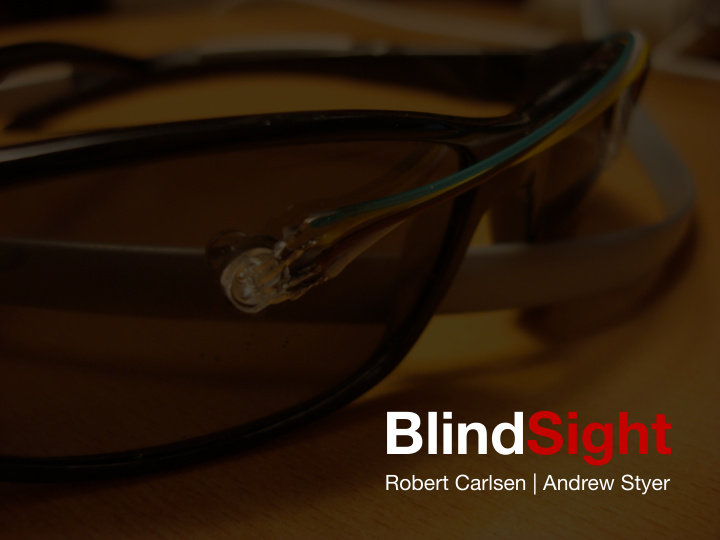



BlindSight Robert Carlsen | Andrew Styer
Concept Explore synesthesia by associating certain body positions with visual hallucinations induced by photic stimulation.
Concept Wearable sensors adjust the frequency of the flashes and thus provide various patterns.
Inspiration William Gibson’s “Neuromancer” protagonist uses electrodes/glasses to jack into cyberspace three-dimensional space visualized as colored geometric shapes
Inspiration Kinesthetics interest in sensing body movement as a system rather than as isolated and disjointed movements.
Topics Proprioception Perception Kinesthetics Association Self
Iteration Sound & Light Machine Visuals in support of audio sequence Expanding visual frequency range Using body movement Providing user direct control Independent eye frequencies
Research Jan Purkinje Recorded patterns perceived looking at Sun Mitch Altman Brainwave Glasses Dominic H. ffytche “The hodology of hallucinations” Cortex, September 2008
Experience LED glasses stimulate vision through eyelids. Flashes are often perceived as patterns. Patterns vary based on flashing frequency. Sensors affixed to sleeves affect frequency. Alter the experience by moving arms. Associate position with visual patterns.
Context Solitary exploration Visual yet vision-diminished Closed eyes Seated Space for movement
Materials Glasses with LED elements Accelerometers worn on arms Microcontroller / battery Soft switch for operation Snug garment
Challenges Discomfort Controlling light intensity Generating meaningful interaction Photosensitive epilepsy Bucha effect
Successes People are often eager to try them Strong favorable reaction Most participants report visualization Generally pleasant sensation Seem absorbed by experience
Exploration Other sensors / movement Utilize gesture Expressiveness in lights Frequency shift events Experiment with audio
BlindSight Robert Carlsen | Andrew Styer http://robertcarlsen.net/blog/blindsight
Recommend
More recommend